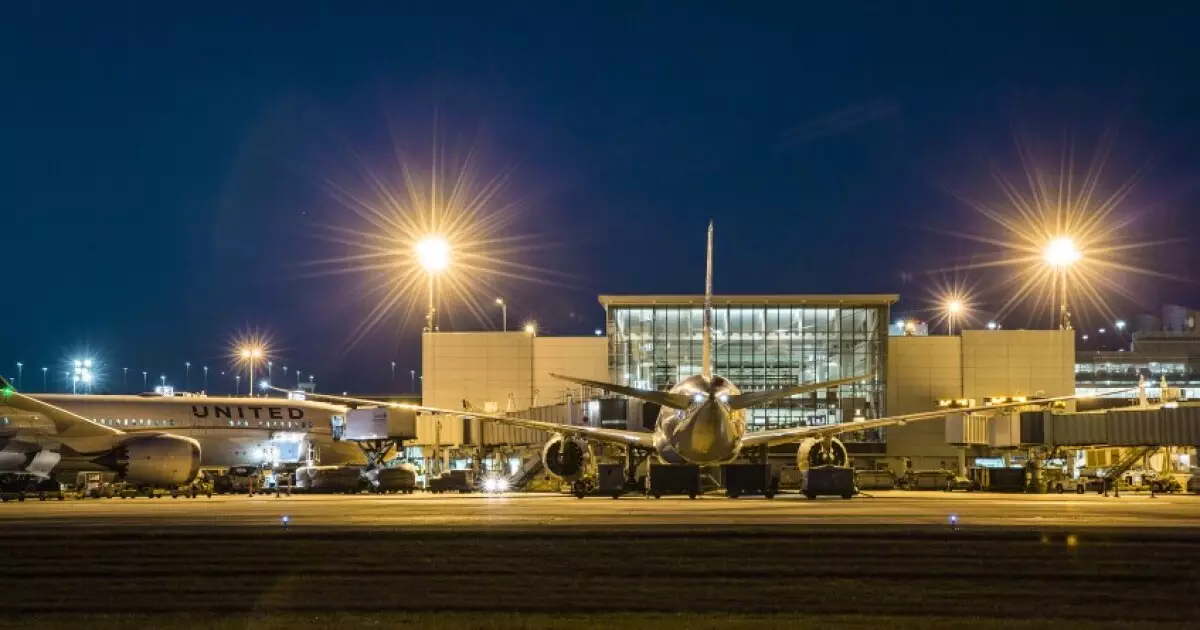Houston’s Reckless Expansion: A High-Stakes Gamble That Risks the Taxpayer’s Future

Houston’s latest bond issuance reveals a city obsessed with expanding its airport system at a pace that might be difficult to sustain. With nearly $720 million on the line, the city is betting heavily on the assumption that passenger growth and corporate reliance on Houston’s airports will continue unabated. While city officials trumpet the projected increase in passenger volume at IAH and Hobby Airport, this optimism seems more rooted in wishful thinking than prudent planning. A looming question is whether the projected revenues will truly materialize to cover the massive debt load that Houston is stacking up.
The recent bond plan’s primary aim—financing the multi-billion-dollar capital improvement plan—underscores a relentless push for infrastructure expansion. Yet, the sheer scale of this plan, amounting to over $2.9 billion through 2030, raises serious concerns about fiscal discipline. Are Houston’s leaders genuinely prepared to weigh the long-term costs of these projects against the fleeting benefits they attract? The notion that these investments will generate the revenue needed to service the debt appears overly optimistic, especially given the volatile nature of the airline industry and economic downturns that could stifle passenger growth.
Debt Dependency and Financial Fragility
The city’s current debt profile is already substantial, with over $2.37 billion of subordinate lien bonds outstanding. Now, with additional bonds poised to flood the market, Houston’s dependence on borrowing grows riskier. The bonds are secured by revenue generated from the airport system, but that revenue is predicated on passenger volumes that could easily decline amid economic shifts or unforeseen disruptions like pandemics or geopolitical tensions.
Furthermore, much of the debt is subordinate, which means that in times of financial distress, senior lien obligations could absorb the revenue streams before the city even considers payouts for lower-ranked bonds. This layered debt structure amplifies the systemic risk, and in a scenario where travel demand plateaus or dips, Houston could find itself squeezed between unmanageable debt payments and declining revenues.
The reliance on traffic growth as the backbone of this expansion strategy is a gamble that overlooks the shifting landscape of airline travel, which is increasingly volatile and susceptible to external shocks. By continuing to pour money into an infrastructure chase without concrete contingency plans, Houston exposes itself—and ultimately its taxpayers—to avoidable financial peril.
The Illusory Promise of a Thriving Future
High credit ratings from agencies like KBRA and S&P suggest that Houston’s airports are currently stable and capable of supporting more debt. However, these ratings are based on rosy assumptions—namely, that passenger numbers will increase or at least stay stable. The projections for IAH to hit 28.4 million passengers by 2032, up from 23.7 million today, are ambitious but not guaranteed.
City officials often rally around these optimistic forecasts, painting a picture of a thriving hub that justifies huge upfront investments. Yet, this optimism may gloss over the systemic vulnerabilities in the airport’s business model. A large majority of traffic at IAH is dominated by United Airlines, which accounts for 73% of passenger traffic, and Southwest Airlines commands 94% at Hobby. Such market concentrations pose risks should these airlines decide to reduce operations or face financial difficulties themselves. The city’s reliance on a handful of carriers to sustain its traffic forecasts is a fragile foundation for such a significant financial undertaking.
Moreover, the dependency on continued airline loyalty and passenger growth ignores broader economic realities. A global shift toward remote work, changing business travel patterns, and geopolitical instability could all suppress growth projections, leaving Houston saddled with debt obligations it may struggle to meet.
Questionable Priorities and Fiscal Responsibility
The city’s decision to issue bonds backed by revenue from an airport system that already carries substantial debt demonstrates a reckless prioritization of infrastructure over fiscal responsibility. While infrastructure can boost economic activity, overleveraging to fund expansion without a clear plan to ensure the repayment of debt is a gamble that the city should not be willing to take.
The current approach also risks passing future financial burdens onto taxpayers who won’t have a say in how city leaders gamble with their money. Borrowing heavily in hopes that future passenger growth will cover costs can turn into a costly lesson when growth falters. The question remains: Is Houston genuinely pursuing a balanced and sustainable development strategy, or is it merely chasing after prestige and economic prestige at the expense of short-sighted financial policies?
As the market and pandemic scenario have shown historically, relying too heavily on growth projections to justify debt, especially in essential infrastructure projects, borders on economic irresponsibility. Houston’s approach underscores a prevalent pattern among cities eager to appear progressive—overextending themselves under the guise of progress and modernization, with little regard for the long-term fiscal consequences.
In essence, Houston’s latest bond issuance encapsulates a high-risk strategy fueled by overly optimistic assumptions and a disregard for prudence. The city appears to be gambling with future fiscal stability to finance current ambitions, a move that could backfire if the hoped-for growth does not materialize. This pattern of aggressive expansion, disguised as necessary development, warrants serious skepticism—and a call for more cautious, fiscally responsible planning that puts the long-term interests of taxpayers ahead of short-term political wins.





